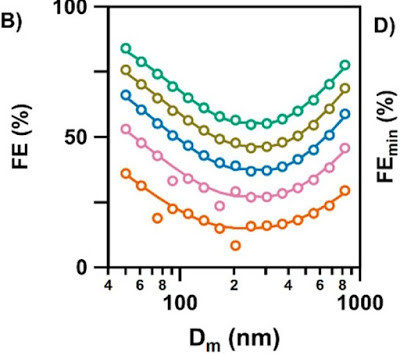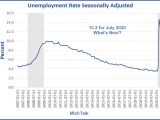
A Song For Masking
August 30, 2020
Daniel Kahn brings a century old Yiddish song about the plagues which beset us then and now
Eli, as part of the target group, would like to have a word about masks. Now the Eli is not a virologist or a statistician, or a medical type, but the Bunny does have some opinions.
We know a few things about the coronavirus 2 [SARS-CoV-2]) and similar viruses
1. Infection by viruses require a minimum dose. A single or a very small number of virus particles are not infectious. No one knows what the minimum effective dose is and, of course, this will vary from person to person. There is evidence that the severity of the disease depends on the initial viral load
2. Hospitals and other places where there people seriously shedding the virus are extremely dangerous and those working in such places require extremely good Personal Protective Equipment including N95 masks.
3. Places where there is good ventilation (e.g. outdoors) are much less dangerous as long as infectious people are not within some small radius
Points 2 and 3 follow directly from Point 1 and there is good direct and indirect evidence for all of them.
4. People are the vector and reservoir for spreading the disease which is why lockdown, social isolation and masking can eliminate the disease at least locally. That's the old fashioned way of dealing with plagues. At worst it buys time and that is vital as treatments improve with time as the decreasing death rate shows, and like Sartre we are waiting for vaccine.
5, The size of the virus is small (of the order of 100 nm) and the disease can be spread directly as well as in droplets emitted in breath which are a few microns. The latter have a very short lifetime in the air, a few seconds, the former a much longer time.
Now Eli needs to talk a bit about masks. It's well established that they can protect others against you, if you have COVID 19 by capturing droplets as you cough and breath. The question is can they protect you from when others are sharing. Turns out, it's not a one way thing, but the protection is asymmetric. OTOH, if the amount of viral aerosol is low, non-perfection is better than nothing.
Masks can be extremely simple, a piece of cloth, or very complex, multi-layer engineered devices. The most sophisticated such as surgical masks and N95 ones have a layer with an electrostatic filter that can attract and hold small aerosol particles. You can also get inserts for cloth masks with electrostatic filters.
Frankly this surprised Eli, but multiple layers in any mask will provide a tortuous path for the particles to pass through so the efficiency of multi-layer masks is much higher than just their pore size would indicate.
Before the last six months or so there actually is not very much information on mask efficiency for various size materials and composites beyond N95 and surgical masks because there was not much need, but, of course, recently, a tsunami. Unfortunately a lot of the tsunami are simply reviews of the tsunami and not so much new work.
Perhaps the best earlier work was Testing the Efficacy of Homemade Masks: Would They Protect in an Influenza Pandemic? Anna Davies, Katy-Anne Thompson, Karthika Giri, George Kafatos, Jimmy Walker, and Allan Bennett, Disaster Med Public Health Prep. 2013 Aug; 7(4): 413–418. which anticipated the need for cloth masks when N95 and surgical mask supply was exhausted by an epidemic. They said, ok, better than nothing against virus and bacteria.
Bacteriophage MS2 is a 28 nm RNA virus, so really small, B atrophaeus is much larger a rod shaped bacterium. Just looking at the Bacteriophage MS2 results shows that even single layers of cloth can provide some protection. They conclude that a surgical mask might be 2 or 3 times as effective as a tea towel. Eli takes this to mean that even simple masks offer some protection in situations where there is not a lot of a virus and can limit infection to below the minimum critical amount.
Among the new work, the most interesting is maybe Filtration Efficiencies of Nanoscale Aerosol by Cloth Mask Materials Used to Slow the Spread of SARS-CoV-2 Christopher D. Zangmeister*, James G. Radney, Edward P. Vicenzi, and Jamie L. Weaver ACS Nano 2020, 14, 7, 9188–9200. So that's in July. They find that 3 layers (blue line) of a simple cotton poplin cloth had a minimum efficiency of ~40% at 200 nm, but was over 50% efficient for smaller and larger particles. Weave and mixtures of fabrics didn't appear to make much of a difference, but the number of layers did, They and Eli note that it would not be easy to breathe with more than three layers.
So in conclusion fabric masks even simple ones provide some protection (not 100% but what is) to the user where the concentration of virus aerosols is low even given the Rabett's native skepticism of hot results.
Eli, as part of the target group, would like to have a word about masks. Now the Eli is not a virologist or a statistician, or a medical type, but the Bunny does have some opinions.
TL:DR: Masks protect you and those near you
The first part requires explanation, but it's actually quite simple.We know a few things about the coronavirus 2 [SARS-CoV-2]) and similar viruses
1. Infection by viruses require a minimum dose. A single or a very small number of virus particles are not infectious. No one knows what the minimum effective dose is and, of course, this will vary from person to person. There is evidence that the severity of the disease depends on the initial viral load
2. Hospitals and other places where there people seriously shedding the virus are extremely dangerous and those working in such places require extremely good Personal Protective Equipment including N95 masks.
3. Places where there is good ventilation (e.g. outdoors) are much less dangerous as long as infectious people are not within some small radius
Points 2 and 3 follow directly from Point 1 and there is good direct and indirect evidence for all of them.
4. People are the vector and reservoir for spreading the disease which is why lockdown, social isolation and masking can eliminate the disease at least locally. That's the old fashioned way of dealing with plagues. At worst it buys time and that is vital as treatments improve with time as the decreasing death rate shows, and like Sartre we are waiting for vaccine.
5, The size of the virus is small (of the order of 100 nm) and the disease can be spread directly as well as in droplets emitted in breath which are a few microns. The latter have a very short lifetime in the air, a few seconds, the former a much longer time.
Now Eli needs to talk a bit about masks. It's well established that they can protect others against you, if you have COVID 19 by capturing droplets as you cough and breath. The question is can they protect you from when others are sharing. Turns out, it's not a one way thing, but the protection is asymmetric. OTOH, if the amount of viral aerosol is low, non-perfection is better than nothing.
Masks can be extremely simple, a piece of cloth, or very complex, multi-layer engineered devices. The most sophisticated such as surgical masks and N95 ones have a layer with an electrostatic filter that can attract and hold small aerosol particles. You can also get inserts for cloth masks with electrostatic filters.
Frankly this surprised Eli, but multiple layers in any mask will provide a tortuous path for the particles to pass through so the efficiency of multi-layer masks is much higher than just their pore size would indicate.
Before the last six months or so there actually is not very much information on mask efficiency for various size materials and composites beyond N95 and surgical masks because there was not much need, but, of course, recently, a tsunami. Unfortunately a lot of the tsunami are simply reviews of the tsunami and not so much new work.
Perhaps the best earlier work was Testing the Efficacy of Homemade Masks: Would They Protect in an Influenza Pandemic? Anna Davies, Katy-Anne Thompson, Karthika Giri, George Kafatos, Jimmy Walker, and Allan Bennett, Disaster Med Public Health Prep. 2013 Aug; 7(4): 413–418. which anticipated the need for cloth masks when N95 and surgical mask supply was exhausted by an epidemic. They said, ok, better than nothing against virus and bacteria.
Bacteriophage MS2 is a 28 nm RNA virus, so really small, B atrophaeus is much larger a rod shaped bacterium. Just looking at the Bacteriophage MS2 results shows that even single layers of cloth can provide some protection. They conclude that a surgical mask might be 2 or 3 times as effective as a tea towel. Eli takes this to mean that even simple masks offer some protection in situations where there is not a lot of a virus and can limit infection to below the minimum critical amount.
TL:DR: MIND THE GAP AND WEAR A MASK
There is also Aerosol Filtration Efficiency of Common Fabrics Used in Respiratory Cloth Masks Abhiteja Kondra et al. CS Nano 2020, 14, 5, 6339 6347 acs nano but it had a fatal flaw because it measured the airflows established in the apparatus before placing the mask materials. This limited the flow to below the normal breathing rates and there is a correction but there are also 109 citations in 4 months since publication. Zangmaeister et al found a lot of other problems with the conclusions of that paper. This illustrates the problem of pre-existing post normal science publications where the rush leads to errors that persist on TwitterSo in conclusion fabric masks even simple ones provide some protection (not 100% but what is) to the user where the concentration of virus aerosols is low even given the Rabett's native skepticism of hot results.



